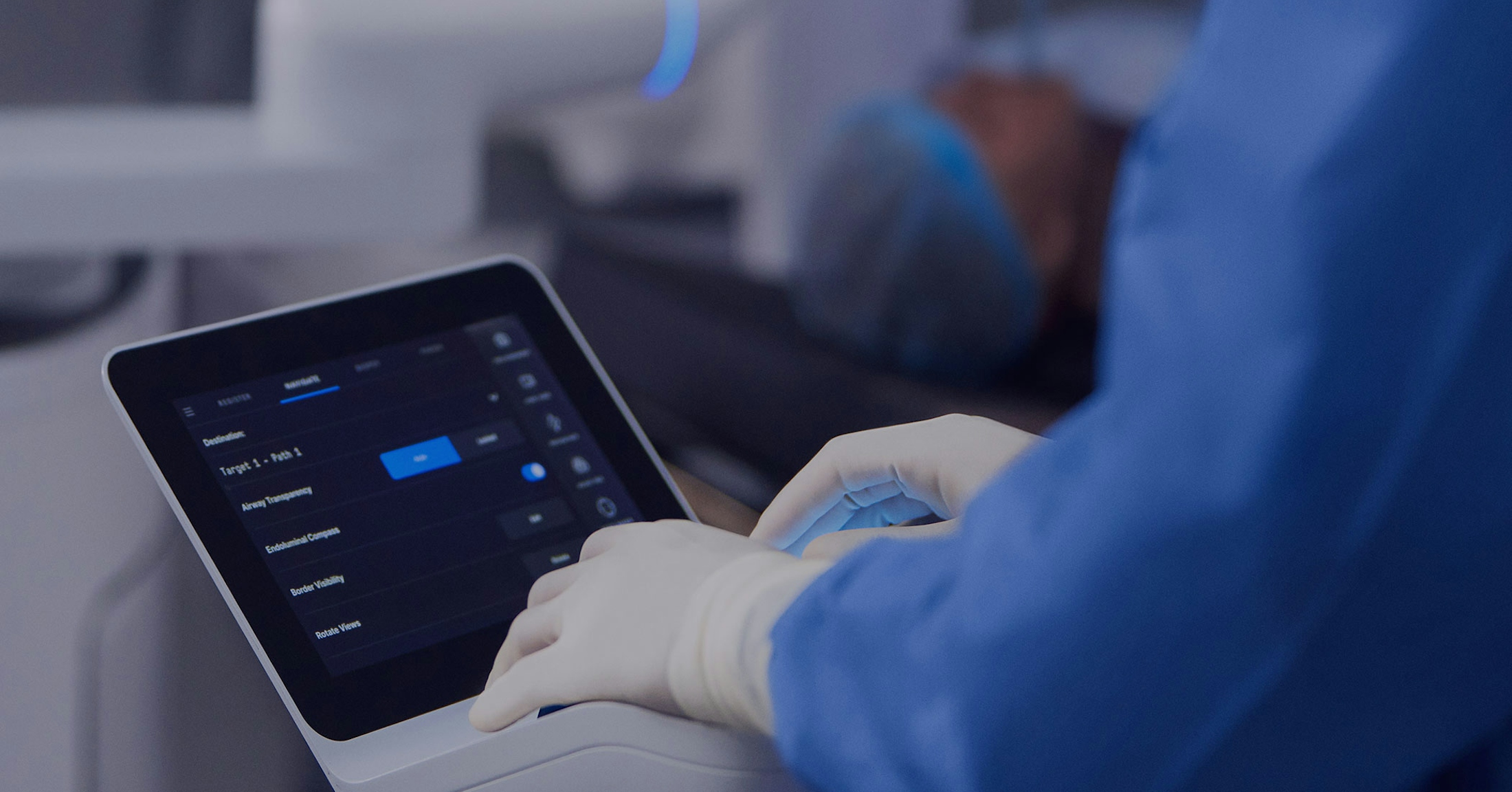

In lung cancer, time to intervention is critical. Ion enables clinical confidence to get early answers and accelerates program impact. Ion delivers meaningful innovation so clinicians can continue to advance care for lung cancer patients.
We built Ion on the belief that collecting lung tissue samples for biopsy could be safe and simple, even when lung nodules are small and located in the periphery. Ion’s ultrathin, ultramaneuverable catheter allows clinicians to reach small lesions in all 18 segments of the lung with more reach, precision, and stability.1
Patients who learn they have a suspicious lung nodule shouldn’t have to wait to find out if they have lung cancer. Instead, they should be able to get definitive answers without delay. Today, many patients are told to return months later for a follow-up CT scan to see if the nodule has grown.2 Patients may also require multiple biopsies prior to a lung cancer diagnosis, which can add months to a patient’s journey to care.3
A chief goal in designing Ion was to help shorten the patient journey by making it possible to biopsy small, difficult-to-reach nodules in the peripheral lung, where more than 70% of cancerous lung nodules may be located.4 Since Ion’s introduction in 2019, we’ve made progress in achieving that goal.
Visit our Research and Outcomes page to learn what recent studies say about how Ion is helping physicians get early answers for their patients.
At Intuitive, our ongoing commitment to collaborative innovation focuses on providing lung cancer centers with a platform for the future. Developed in partnership with the care community, Ion delivers meaningful innovation designed to continually advance lung care.
My Intuitive for Ion gives you the ability to manage your case data all in one place. The platform equips you with a succinct record of combined system and clinical data5 that can be used to draw unique insight about your personal practice. With your data in hand, you can monitor practice patterns and identify variation as it occurs.
Thank you for your submission.
Important safety information
Risks associated with bronchoscopy through an endotracheal tube and under general anesthesia are infrequent and typically minor, and may include but are not limited to: sore throat, hoarseness, respiratory complications including dyspnea or hypoxemia, airway injury, bronchospasm, laryngospasm, fever, hemoptysis, chest or lung infection including pneumonia, lung abscess or an adverse reaction to anesthesia. Although rare, the following complications may also occur: bleeding, pneumothorax (collapsed lung), cardiac related complications, respiratory failure, air embolism, or death. As with other medical procedures, there may be additional risks associated with the use of general anesthesia and/or endotracheal intubation which are not listed above; you should consult a health care professional regarding these and other potential risks.
Procedures using the Ion Endoluminal System may be associated with longer procedure and/or longer anesthesia time.
Ion endoluminal system
The Ion endoluminal system (Model IF1000) assists the user in navigating a catheter and endoscopic tools in the pulmonary tract using endoscopic visualization of the tracheobronchial tree for diagnostic and therapeutic procedures. The Ion endoluminal system enables fiducial marker placement. It does not make a diagnosis and is not for pediatric use.
Information provided by the Ion endoluminal system or its components should be considered guidance only and not replace clinical decisions made by a trained physician.
The Flexision Biopsy Needle is used with the Ion Endoluminal System to biopsy tissue from a target area in the lung.
The PlanPoint Software uses patient CT scans to create a 3D plan of the lung and navigation pathways for use with the Ion Endoluminal System.